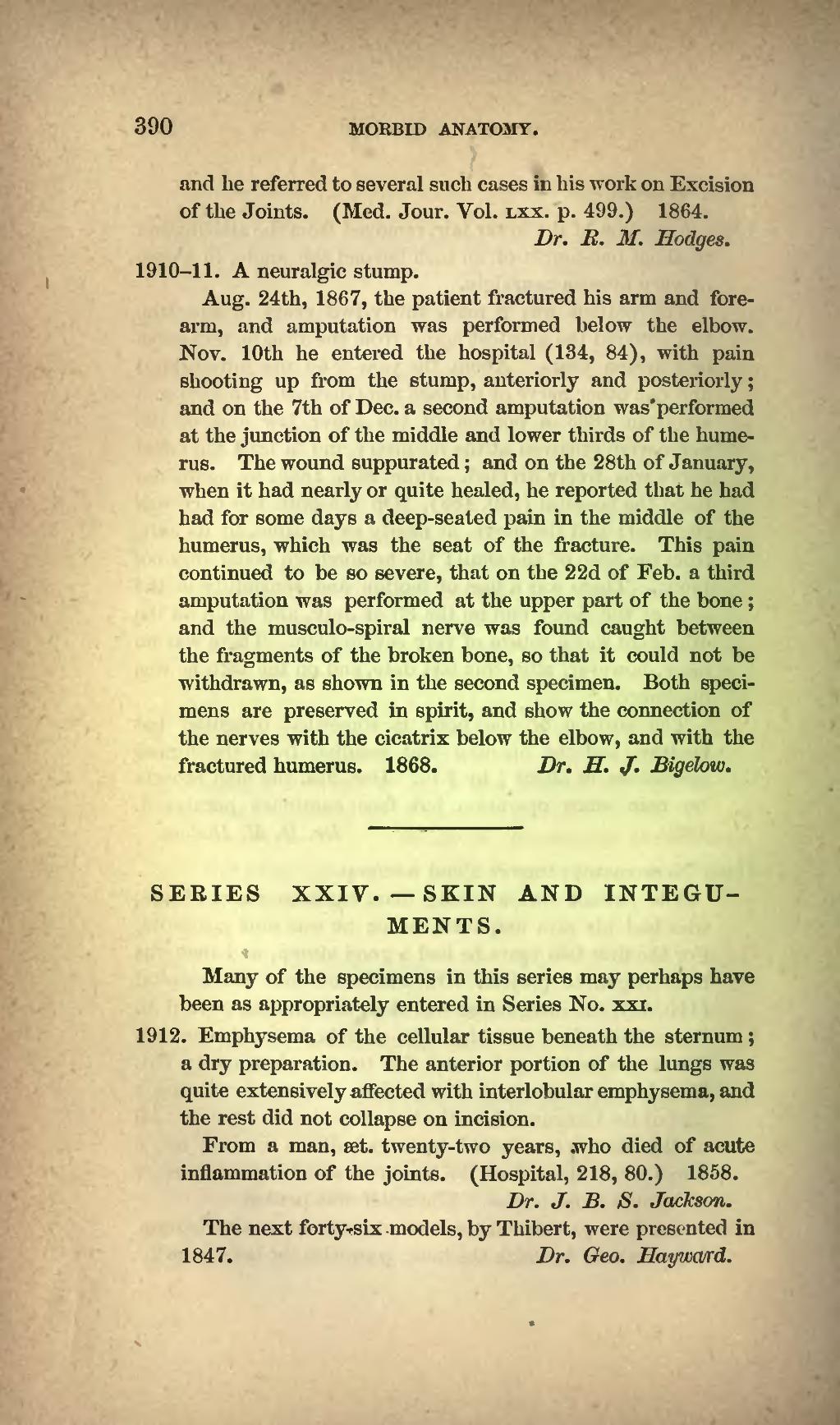and he referred to several such cases in his work on Excision of the Joints. (Med. Jour. Vol. LXX. p. 499.) 1864.
Dr. E. M. Hodges.
1910-11. A neuralgic stump.
Aug. 24th, 1867, the patient fractured his arm and fore-arm, and amputation was performed below the elbow. Nov. 10th he entered the hospital (134, 84), with pain shooting up from the stump, anteriorly and posteriorly; and on the 7th of Dec. a second amputation was performed at the junction of the middle and lower thirds of the humerus. The wound suppurated; and on the 28th of January, when it had nearly or quite healed, he reported that he had had for some days a deep-seated pain in the middle of the humerus, which was the seat of the fracture. This pain continued to be so severe, that on the 22d of Feb. a third amputation was performed at the upper part of the bone; and the musculo-spiral nerve was found caught between the fragments of the broken bone, so that it could not be withdrawn, as shown in the second specimen. Both specimens are preserved in spirit, and show the connection of the nerves with the cicatrix below the elbow, and with the fractured humerus. 1868. Dr. H. J. Bigelow.
SERIES XXIV. SKIN AND INTEGUMENTS.
Many of the specimens in this series may perhaps have been as appropriately entered in Series No. xxi.
1912. Emphysema of the cellular tissue beneath the sternum; a dry preparation. The anterior portion of the lungs was quite extensively affected with interlobular emphysema, and the rest did not collapse on incision.
From a man, æt. twenty-two years, who died of acute inflammation of the joints. (Hospital, 218, 80.) 1858.
Dr. J. B. S. Jackson.
The next forty-six models, by Thibert, were presented in 1847. Dr. Geo. Haywcurd.
